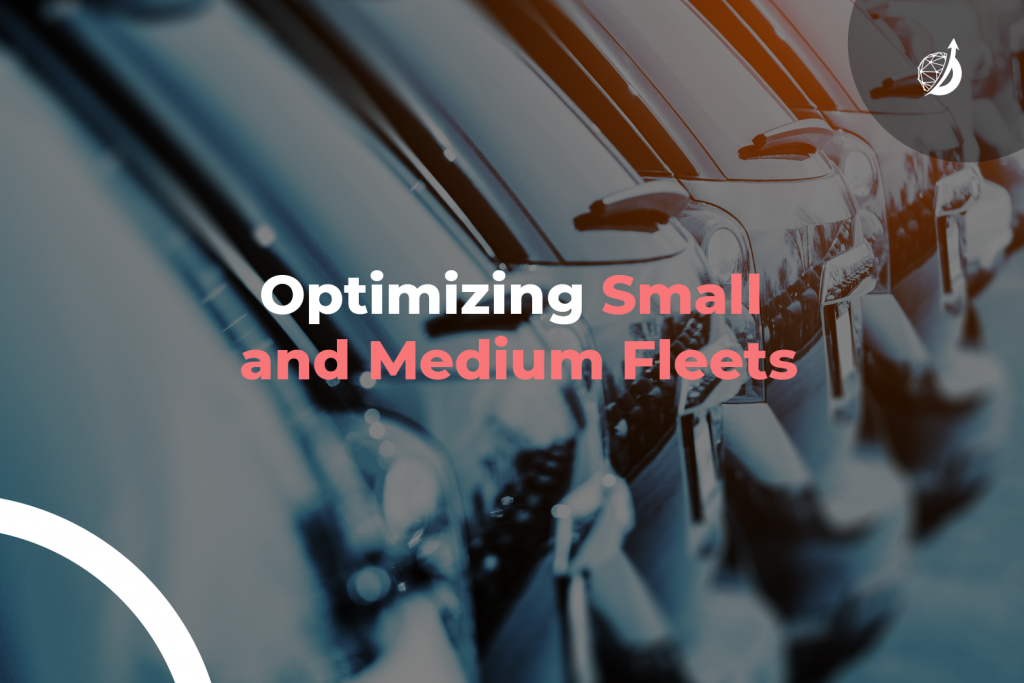4 Ways to Optimize Your Small or Medium-Sized Fleet

When you’re managing a small or medium-sized fleet, time is of the essence. Simply overseeing day-to-day operations is a full-time job—let alone measuring and optimizing your TCO. Luckily, there are simple best practices that you can implement today to optimize your costs, even if you’re short on resources. Explore these tips for optimizing your small or medium-sized fleet. Then, contact us for more practical strategies that boost your fleet’s bottom line.
1. Get proactive about purchasing
When you’re purchasing new assets for your fleet, the model you choose is critical (more on that in #2 below). But when you purchase a vehicle, and under what terms, also can impact your bottom line significantly. Let’s start with the terms. When acquiring a new vehicle, look beyond “lease or own” to find the option right for your business’ cash flow and other financial considerations. We often suggest trac leases and hybrid options for small fleets.
In terms of when to purchase assets, analytics is your golden ticket. By diving into the data, you can pinpoint exactly when your opex costs outweigh the benefits of investing in a new vehicle. You can also determine the right time for maximizing your resale value and lowering your cost per mile. Being strategic about vehicle acquisition timing also has another upside: it can help you navigate OEM production disruptions without a hit to your bottom line. You might be operating via multiple spreadsheets rather than a true asset management platform, but you can still find “easy wins” by using operational data to refine your acquisition strategy.
Cost Savers: Hybrid and trac leases; smartly-timed acquisitions
2. Standardize your fleet
Vehicle standardization might not be the first thing that comes to mind when you think of cost savings. However, the vehicle you choose—and the standardization across your fleet—can be a game-changer for your bottom line. Start by determining which capabilities your business actually requires. Resist the urge to pack your fleet with features that you don’t need. Instead, consider a model that will get the job done reliably while enhancing your fuel economy.
Once you’ve determined the right model and features, standardize your fleet. By doing so, you’ll be able to optimize your maintenance and fueling strategies, which can save significant costs in one fiscal year—and across the lifecycle of your assets.
Get more vehicle acquisition best practices.
Cost Savers: “Right-sized” model and features; fuel economy; vehicle standardization
3. Find a trusted advisor
With so many factors going into your TCO, it only makes sense to take a “full picture” approach to fleet optimization. But at the same time, fleet managers are handling more data, programs and details than ever before. If you’re responsible for your company’s fleet, you already know that optimization is easier said than done, despite all your good intentions. That’s why many small- and medium-sized fleets supplement their in-house capabilities with a trusted advisor.
Onward uses a turnkey approach to help our fleets succeed, managing every stage from acquisition through remarketing. Why does this matter? Because when a single partner manages your fleet across the lifecycle, no area for optimization gets overlooked. The more data, the more dots you can connect, and the more opportunities you have to reduce costs. We oversee all aspects of our clients’ fleets with high-touch service. That’s the approach that modern fleets require—and the partnership that busy in-house teams deserve.
Cost Saver: A turnkey partner who uncovers opportunities for optimization
4. Let the data drive you
One of the biggest challenges for small fleets is tackling the analytics learning curve. But even though it might be intimidating, the right partner can help you integrate multiple sources of data into one user-friendly interface. Once you have access to comprehensive data, it opens the door to fuel savings, simplified compliance and, as a whole, a lower TCO.
Asset management platforms have come a long way in terms of affordability, features and user experience. The best solutions connect the dots across all the spend areas for a particular asset and let you define your own KPIs for easy tracking. Also look for customizable reporting tools, an easy user interface that your team will actually want to use, and, above all, the ability to integrate data from multiple sources. By eliminating silos, you’re on your way to maximizing value.
With your asset management system in place, lean on your trusted advisor to help you interpret the data and apply game-changing insights. Once you leave your spreadsheets behind in favor of a data-driven platform, you’ll be surprised how easy it is to spot, and seize, opportunities for cost savings.
Read our quick guide on fleet management analytics trends.
Cost Saver: A platform that enables data-driven decisions
Small- and medium-sized fleets often get overlooked. But at Onward, we understand that large fleets aren’t the only ones that deserve “best in class” solutions. Whether you’re looking for ways to reduce costs or a strategic fleet optimization partner, drop us a line. We’re ready to learn about your business, share our insights and help you finally understand how much you’re really spending per asset.
